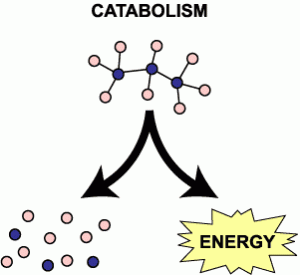What are amino acids? What are branched-chain amino acids? What do these have to do with my workouts, and why would I consider spending money on them?
Amino Acids
Amino acids are the building blocks of protein molecules, linked together in chains of thousands of combinations. They wind and loop to make various configurations of proteins, and these are the worker bees of our bodies, the molecules that “do” everything. Conventionally, shorter chains of amino acids are called peptides and longer chains are called polypeptides or proteins.

Many amino acids exists, but there are 20 standard (or canonical) amino acids encoded by the genetic code (DNA) of our body. How does DNA code for amino acids?
Amino acids have a common structure containing a central carbon atom with 4 attachments:
- A carboxyl group (carbon, oxygen, hydrogen)
- An amino group (Nitrogen and hydrogens)
- A hydrogen (proton)
- An R-side chain that is different for each type of amino acid

Amino acids are linked into chains through creation of a bond (called a peptide bond) between the carboxyl carbon of one amino acid and the nitrogen of the next amino acid.

Among the 20 standard amino acids, 9 are essential amino acids, meaning the human body is unable to produce them on its own, and they must be acquired through food or supplements. Another 6 are considered conditionally essential since the body can normally synthesize them but their production may be limited under certain conditions.
[Side note: the difference between a complete protein and incomplete one is that a complete protein contains all 9 essential amino acids while an incomplete protein does not]

Branched-Chain Amino Acids (BCAAs)
“Branched-chain” refers to the structure of the R-group (green part of molecules below) of 3 particular amino acids: Leucine, Isoleucine, and Valine. As you can see from the table above, all three are essential amino acids and not produced by the human body. Of the 9 essential amino acids (EAA), it’s recommended that 40% of your daily EAA intake includes BCAAs.

The highest concentration of BCAAs can be found in animal protein sources such as chicken, beef, salmon, eggs, and whey protein where they make up roughly 35% of all muscle tissue (lean meat=muscle=protein=amino acids). Leucine, Isoleucine, and Valine tend to occur in these sources in a 2:1:1 ratio.
What BCAAs Do:
- Produce energy during exercise
- BCAAs are the amino acids most oxidized (used) in skeletal muscle to produce energy (ATP) during exercise (studies indicate that the amino acids alanine, aspartate, and glutamate may be used for this purpose as well).
- A large pool of BCAAs helps sustain muscle energy levels during exercise.
- Initiate protein synthesis
- Protein Synthesis means putting proteins together to make muscles tissue (aka GAINZZZ)
- Leucine is responsible for initiating muscle protein synthesis (MPS)
- Prevents muscle loss during breaks from training or injury
- Our bodies are efficient energy machines. In terms of muscle (and bone), which requires a lot of energy to use, if we aren’t using it on a regular basis, our bodies will get rid of it. You’ve probably witnessed this if you’ve worn a cast for any period of time.
- Studies (in rats) showed BCAA supplementation slowed muscle loss (called atrophy) during immobilization more so than placebo supplementation.
- Preserves muscle mass while dieting
- Dieting is a catabolic process. It creates a caloric deficit so the body will resort to burning fat for energy (ideally). Unfortunately, the body tends to go into survival mode during caloric deficits. It takes a death grip on fat stores (in case its actually an apocalypse and it needs energy to survive) and resorts to breaking down MUSCLE protein for amino acid energy sources. Not only does the break down of muscle increase while dieting but protein synthesis (muscle creation and repair) also slows.

- Supplementing with BCAAs can counteract this muscle sacrifice! Leucine stimulates protein synthesis, BCAAs increase cell capacity for protein synthesis, decrease protein breakdown, and supply extra amino acids to use for energy instead of those in the hard-earned muscle.
- Dieting is a catabolic process. It creates a caloric deficit so the body will resort to burning fat for energy (ideally). Unfortunately, the body tends to go into survival mode during caloric deficits. It takes a death grip on fat stores (in case its actually an apocalypse and it needs energy to survive) and resorts to breaking down MUSCLE protein for amino acid energy sources. Not only does the break down of muscle increase while dieting but protein synthesis (muscle creation and repair) also slows.
- Blocks fatigue signals

- Tryptophan (another amino acid) is released during exercise. It travels to the brain and is converted to serotonin to signal fatigue. BCAAs compete with tryptophan for entry into the brain, so it takes longer for fatigue to occur. This allows for more intense workouts!
How to Take a BCAA Supplement
The major benefit is that BCAA supplements are free-form amino acids. They are rapidly absorbed into the blood stream without undergoing digestion, so they are quickly put to work in the muscles or immediately used as an energy source during workouts.
5 grams of BCAAs (and no more than 10g) at a 2:1:1 ratio of leucine, isoleucine, and valine is ideal during a workout, especially if the workout is done in a fasted state or caloric deficit.
BCAAs can be supplemented in a couple different ways: powder, capsule, pill, and mixed drink. I recommend any except pills, just because pills usually contain extra ingredients to make the “pill”. Also, try to stick with products that list exact amounts of amino acids rather than “proprietary blend.”
- Powder:
- I’m a fan of Optimum Nutrition Products, so my go-to here is their brand. Generally for powdered supplements 1 tsp is about 5 grams.
- Powders, especially unflavored, can easily be mixed into a pre or post workout shake
- Yes, if you put it in a ziplock bag it looks like a questionable white powder.

- Capsule:
- Optimum Nutrition
- Optimum Nutrition
- Powders
- Core ABC
- Scivation Xtend
Do you use BCAAs? When do you use them, what brand do you like, and how much do you take?
Poliquin Group. Ten Benefits of BCAAs. 12/17/2013




